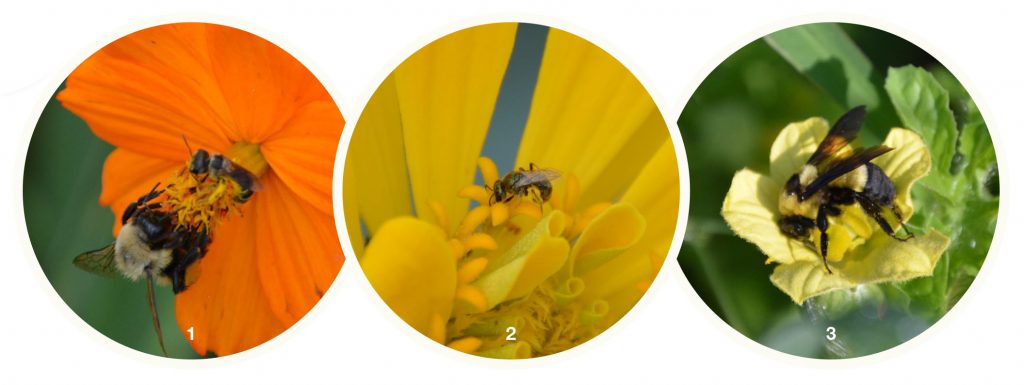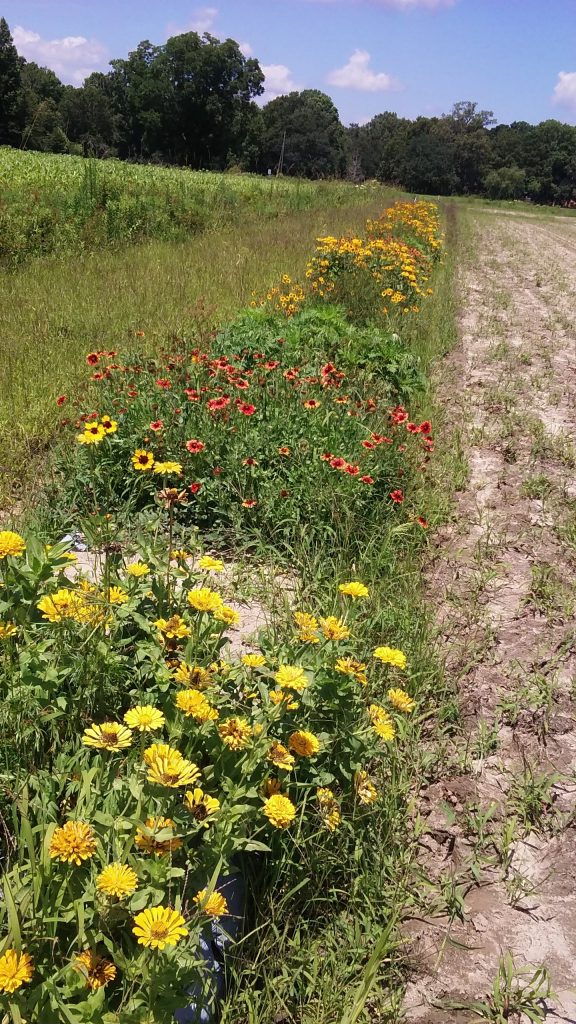
2)Sweat bees (Lasioglossum spp.) are so small they often go unnoticed. Sixteen species of these bees were collected visiting watermelon.
3) The Southern plains bumblebee (Bombus fraternus) is a frequent watermelon and wildflower pollinator on farms in South Carolina.
By Mimi Jenkins
A resilient and stable pollinator community includes a diverse suite of pollinators with a range of nesting habits, foraging behaviors and activity periods. These different behaviors and traits complement each other and can buffer against any year-to-year fluctuations or environmental changes that affect species differently.
BEYOND HONEY BEES
In many pollinator-dependent crop systems, honey bee colonies are brought onto the farm to provide the pollination services necessary to produce the crop. In the case of watermelon, a monoecious plant with separate male and female flowers that make it entirely dependent on pollinators to set fruit, using honey bee hives to pollinate the crop is widely recommended for growers to achieve high yields. While honey bees are an important agricultural pollinator, especially for industrial scale farms, considering alternative pollination sources that already exist in the natural environment helps buffer against ongoing honey bee losses and the rising cost of renting honey bee hives.
Wild native bee communities rely much more on the natural habitat of an area than honey bees because of their different nesting habits and because they are not actively managed by humans. Wild bees require habitat that provides food (flowers) and shelter (nesting materials and proper soil/environmental conditions). Other pollinating insects, such as flies and butterflies, share the need for floral resources with bees but many do not have a nest, and others require certain plant hosts or prey in their larval stage.

Implementing on-farm enhancements such as wildflower strips is one way to increase the availability and diversity of food resources for pollinators beyond the crop bloom period. Traits that should be considered for wildflowers in farm fields include: drought-tolerance, native to eco-region, fast germination rates, hardiness, difference in flowering period, length of flowering period and attractiveness to a variety of pollinating insects.
RESEARCH RESULTS
In a study I conducted from 2016 to 2018, the number of visits to watermelon was significantly higher for one group of pollinators (sweat bees in the genus Lasioglossum) when wildflowers were in a watermelon field compared to fields without wildflowers. These small, metallic grey-green bees nest underground and do not forage more than a few hundred meters from their nest.
In addition, the overall biodiversity of the pollinator community was higher in watermelon fields with wildflowers strips, with nearly twice the number of pollinator species collected on watermelon fields with wildflowers compared to control fields. The mean number of watermelon pollinating species per field was 15 species, and the mean number of total pollinators (including wildflower pollinators) per field was 24 species.
More than half (64 percent) of the watermelon pollinator species collected were also collected visiting one or more of five wildflower species in the study. This demonstrates that social colonies of bees, solitary bees and other insects like syrphid flies and butterflies utilize the multiple floral species as resources on the watermelon field in addition to the crop flowers when they are available. In fields with wildflowers, we also observed and collected a wide range of pollinators and insects that do not visit watermelon flowers but visited the wildflower species, such as several swallowtail butterfly species, cleptoparasitic bees and sunflower bees.
In conclusion, when wildflowers and weedy flowers are available on the farm landscape, a more diverse community of beneficial insects is supported. This community included declining species like Monarch butterflies, the American bumblebee and the Southern plains bumblebee as well as parasitic and predatory flies and wasps that can control crop pests.









